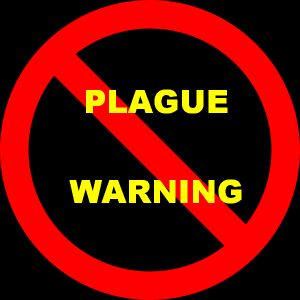Should You Be Worried About the Plague?

When you hear the term “the plague” it is common that you automatically think back to grade school when you learned about its history and how it wiped out about 60% of Europe’s population in the 14th century. Historians and researchers now know that the plague is caused by a bacterium that infects small rodents and is usually transmitted through bites and fleas that jump from host to host. But how is this relevant today? At the beginning of this month, a 16-year old high school student, Taylor Gaes, died from the plague, making him the first person since 1999 to catch the highly contagious disease.
According to MSN, the high school baseball and football player suffered from fever, muscle aches and pains that were misinterpreted as the flu. Only after his death did his doctors conclude his flu was actually a case of the plague.
Different Types
Dr. Amesh Adalja, an infectious disease physician and senior associate at the University Of Pittsburgh Medical Center for Health Security explains, “It’s tragic but not surprising that Gaes’ symptoms were misinterpreted. It’s very hard to distinguish plague from a lot of other illnesses in its early stages because there are several forms of the disease. The type that Gaes had – with infection spread throughout the body – can be difficult to recognize. If someone has a bubonic plague, they will often have a swollen lymph node, which is very dramatic. But if someone has primary septicemic plague or pneumonic plague, you won’t be able to distinguish it that easily from other common causes of respiratory illness.”
A statement from the Larimer County Department of Health and Environment believes that Gaes may have contracted the plague from fleas on a dead rodent or other animal on his family’s property but an investigation is still underway. Rodent infestations are serious issues. Once it gets out of our hand, it can become quite severe.
Treatment
According to the CDC, a plague vaccine is no longer available in the United States. However, it can be treated with commonly available antibiotics. The earlier a patient seeks medical care and receives treatment, the better the chances of recovery. This disease seems to occur in rural areas of the western U.S like New Mexico, Arizona and Colorado (CDC).
Here’s how you can protect yourself and your family from the plague:
Symptoms (according to the CDC):
- Swollen lymph nodes
- Fever
- Chills
- Severe Headache
- Extreme exhaustion
- General feeling of illness
- Skin that has turned black – fingers, toes and/or nose
How to Prevent the Plague (according to the CDC):
- Reduce rodent habitat around your home and work place by removing brush, rock piles, junk and piles of firewood.
- Wear gloves when handling potentially infected animals to prevent contact between skin and plague bacteria.
- Use repellent if you think you could be exposed to rodent fleas while outdoors.
- Apply flea control products to your pets.
- Consider getting a pest control plan for your garden.
- Do not allow your pets to sleep in your bed after they have freely roamed outside.
Sources: http://www.cdc.gov/, http://www.msn.com/
